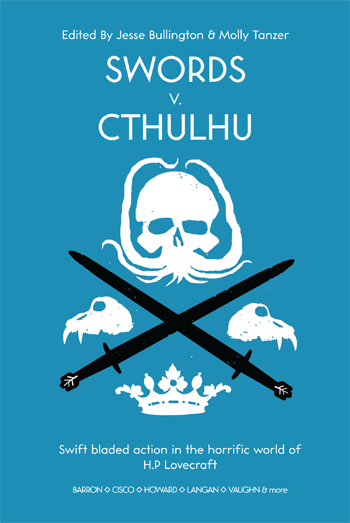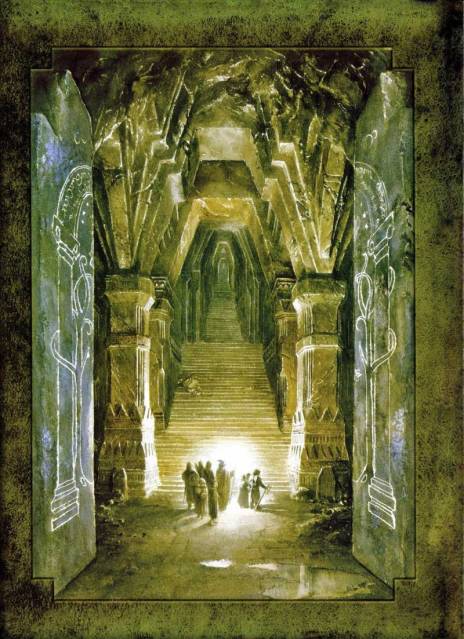As outlined in an earlier post, in the coming weeks I will be dedicating an entry to each story in the new anthology Swords v Cthulhu, edited by Molly Tanzer and Jesse Bullington and published by Stone Skin Press. My reviewing method will be peppered with the cultural associations that each of these stories inspire. These will be presented with no excuse, apology or editorial justification.

The Living, Vengeant Stars by E. Catherine Tobler
‘The Thing That Should Not Be’ is a very Lovecraftian concept — and a Metallica song with that title was actually inspired by Lovecraft’s own story The Shadow Over Innsmouth. And in plenty of ways that aren’t obviously linked to the Lovecraftian milieu, a lot of the stories in Tanzer and Bullington’s collection defy expectation.
Orrin Grey’s A Circle That Ever Returneth In, for example, attempts a Choose Your Own Adventure conceit in a short story format, while Natania Barron and Carrie Vaughn‘s contributions re-jig literary touchstones with a Lovecraftian touch that is both delightful and surprising.
And Tobler’s story is perhaps the most defiant of all, in that it doesn’t simply test the bounds of the short story framework, but also the expected thematic scope of Lovecraft’s legacy. She does this by going for a story in the epic fantasy mode, and it’s quite something to see it unravel. Elspeth is given a mission from the ‘dark man’, and it is presented to us as such:
Had killing the invisible horror of S’tya-Yg’Nalle not been enough? Never en ough, the dark man said, and Elspeth understood the enormity of what he wanted of them; saw in the far distance the colossal, tentacled beast slumbering beneath green waters, bound to the prison stones with chains as thick as tree trunks. This was the goal.
This mission appears to Elspeth in a dream, and we all know that dreams — and their corresponding Dreamlands — carry a lot of weight in Lovecraft’s universe. On this count, Tobler falls in line with her predecessor, but the more mundane mission of rescuing Elspeth’s sister from the “horrors of Lowenhold Prison” is what further animates the narrative, as our protagonist is joined by a ‘party’ whose set-up is immediately recognizable to those familiar with the fantasy genre.

Moria by Alan Lee
But whereas other stories in the collection have taken advantage of the gamification of fantasy, Tobler goes for something more classically immersive. But beyond Tobler’s inspired hand with descriptive details — a skill that comes to full fruition at the story’s well executed climax — Tobler also endows her protagonist with a philosophical mindset. After Tobler’s closely-focused third-person narration informs us that the party was established in the most generic and ‘Dungeons and Dragons’ way possible — the ‘dark man’s proposal in a tavern — she allows Elspeth some space to ponder the wider implications of their mission:
Each [of the party] was something to behold, possessing battle techniques Elspeth had not encountered prior to this adventure. She longed to know each woman better, but this was absurd. If they were all to die, what was the point? Perhaps, she decided, that was the point — to know their ways before they were lost to the world. To preserve and keep what they knew, to see some part of them carried into the inscrutable future.
A gripping and atmospheric story that teases and the wider potential of such a genre mash-up.
Pingback: Swords v Cthulhu read-a-thon #17 | Eneasz Brodski | Soft Disturbances
Pingback: Swords v Cthulhu read-a-thon | Table of Contents | Soft Disturbances